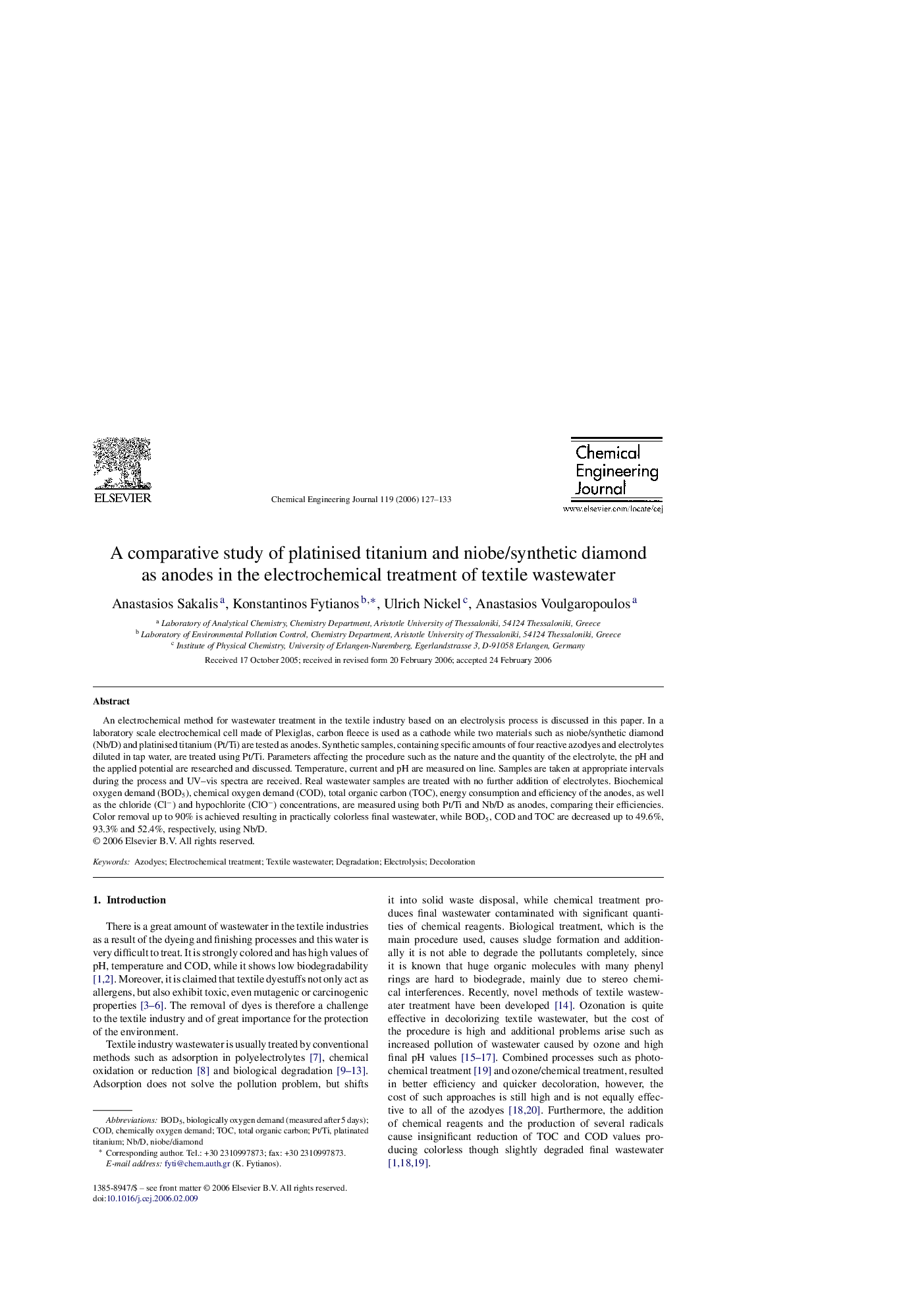| Article ID | Journal | Published Year | Pages | File Type |
|---|---|---|---|---|
| 154082 | Chemical Engineering Journal | 2006 | 7 Pages |
An electrochemical method for wastewater treatment in the textile industry based on an electrolysis process is discussed in this paper. In a laboratory scale electrochemical cell made of Plexiglas, carbon fleece is used as a cathode while two materials such as niobe/synthetic diamond (Nb/D) and platinised titanium (Pt/Ti) are tested as anodes. Synthetic samples, containing specific amounts of four reactive azodyes and electrolytes diluted in tap water, are treated using Pt/Ti. Parameters affecting the procedure such as the nature and the quantity of the electrolyte, the pH and the applied potential are researched and discussed. Temperature, current and pH are measured on line. Samples are taken at appropriate intervals during the process and UV–vis spectra are received. Real wastewater samples are treated with no further addition of electrolytes. Biochemical oxygen demand (BOD5), chemical oxygen demand (COD), total organic carbon (TOC), energy consumption and efficiency of the anodes, as well as the chloride (Cl−) and hypochlorite (ClO−) concentrations, are measured using both Pt/Ti and Nb/D as anodes, comparing their efficiencies. Color removal up to 90% is achieved resulting in practically colorless final wastewater, while BOD5, COD and TOC are decreased up to 49.6%, 93.3% and 52.4%, respectively, using Nb/D.
